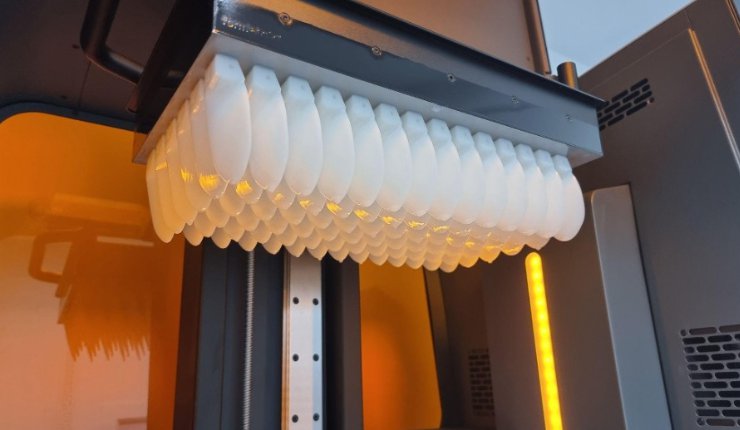
What is foiling? Foiling is a variation of surfing, but with a shorter board with a masthead and foils, also known as wings, which lift the board above the surface by one foot or more. Being above water allows surfers to ride waves further off shore, to surf when there is no wind or even on flat water.
A foilboard, otherwise known as a hydrofoil board or foil surfboard, consists of two primary components, the board and the hydrofoil. Unlike regular surfing, the board is typically made from a material such as carbon fiber. The hydrofoil, attached to the bottom of the board contains the mast as well as the front and back wings, can also contain carbon fiber.
Hydrofoils work by generating an upward force in reaction to downward pressure. The wings, start beneath the water and as the surfboard gains speed, the wings push the water down, creating the upward force. 3D printers and materials from Formlabs are being used by a company called Foil Drive to manufacture end-use parts for the foil surfboards.
Speaking about why 3D printing was the right choice for Foil Drive’s applications, Formlabs APAC Marketing Lead Liam Marriott told TCT: “The ability to get out on the water in any condition is appealing for riders, but difficult for the equipment – which must be built to endure harsh ocean conditions, plunging in and out of waves as propellers spin at 3000 rpm. Before Foil Drive used 3D printing, the propeller blades of the surfboards were manufactured with inconsistent quality, leading to part failures in the water and ending users’ rides early.
3D printing enabled Foil Drive to both manufacture in-house at a cost lower than traditional manufacturing and solve the quality issues. The company used Formlabs Form 3L and Fuse 1+ 30W 3D printers which enabled them to manufacture over 1,000 end-use parts including propeller blades, controller brackets, and waterproof electrical motor pods that go with their riders in the water.”
3D printing allowed Foil Drive to change the design of blades as they were being manufactured, and tested them in low quantities and at a price that ensured profitability was still possible according to Formlabs. Foil Drive trialled various materials, on Formlabs FDM printers, and also worked with materials such as Tough 1500 and Tough 2000, but achieved consistency once the correct material was found, which turned out to be Formlabs’ glass-filled Rigid 4000 Resin, and was printed on a Form 3+ SLA 3D printer. The company worked with Melbourne-based supplier ThingLab to test parts.
Speaking to TCT about the benefits of Rigid 4000 Resin for hydrofoil blades Marriott said: “This material is ideal for load-bearing applications because it can be printed into thin and sharp blades, but is strong and stiff, which ensures the blades are strong enough to spin through turbulent water without breaking at 3000 rpms.”
Marriott told TCT about where else 3D printing was used in the hydrofoils: “Foil Drive retrofits rely on brackets that are repeatedly tightened and loosed to clamp parts together. Without the right material, these brackets would snap if over tightened, but with the use of Formlabs Tough 200 Resin, no brackets have broken. The Tough 2000 Resin is ideal for bracket production because it can produce strong and durable parts with minimal deformation, so even after months in the ocean water and repeated clamping and unclamping, the brackets will remain intact.”
Using 3D printing allowed Foil Drive to scale its production volume, operating 24 hours a day, seven days a week. The company began with 100 parts a week, which then increased to 200, then with the addition of a second Fuse 1+ 30W 3D printer, 650 Nylon 12 Powder parts each week.
Marriott added: “By adopting 3D printing into its workflow for in-house production, Foil Drive has grown to a multi-million dollar business in only three years.”




